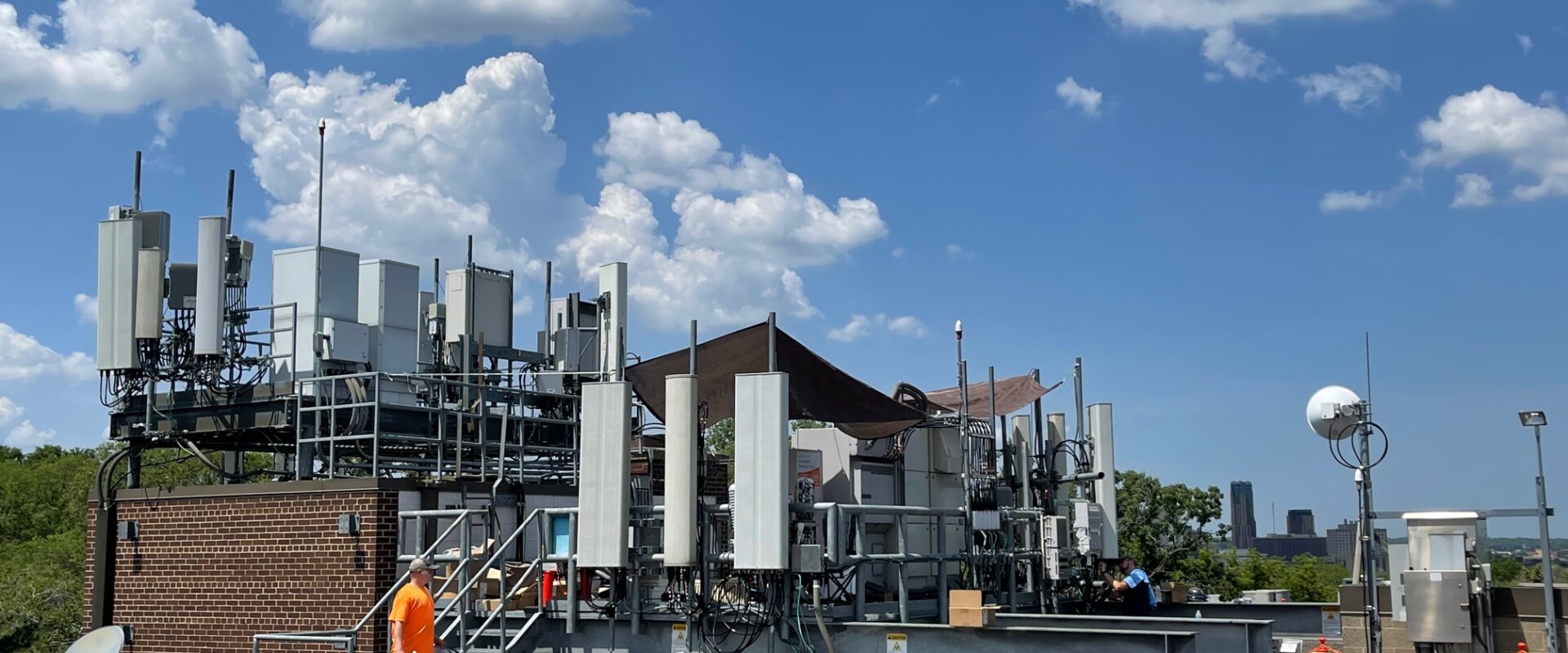“LEASE VALUE CALCULATOR FORMULA = What they want you to know ÷ WHAT WE KNOW”
What is a Cell Tower? How Do Cell Towers Work?
A cell tower is the core vertical infrastructure utilized to operate mobile communications networks. Can you imagine where we would be today without cell towers? Cell tower infrastructure enables us to be connected globally via a device that fits into our pockets, which replaced dozens of other devices and tools that were commonplace household items until the emergence of the iPhone around 2007. Cell towers are everywhere. In the United States, seventy percent or approximately 400,000 calls are made on a daily basis to 911 on a cell phone. While cell towers are often demonized, there is no denying that they save lives by the sheer numbers of emergency calls made. Mobile devices are used on over half of all internet searches, again made possible by cell towers that connect mobile devices to wireless communication networks.
As much as the smartphone was revolutionary, without cell towers it would be a mere paper weight. A cell tower connects cellular network subscribers (i.e. Verizon Wireless, T-Mobile, AT&T, DISH, U.S. Cellular customers) to their wireless communications networks allowing devices and people to transmit and receive voice and data communications.
What is a cell tower? A cell tower is more commonly referred to as a cell site in the wireless industry. All cellular towers are cell sites as long as a carrier is utilizing them, but but a cell sites are “cell towers” which connect to wireless networks via fiberoptic (in the ground) or microwave backhaul (in the air). Cell towers are deployed in a grid, to provide coverage to a region or “cell”.
Cell towers come in all shapes and sizes. They can be 10’ tall lollipop sites, 30’ small cell towers, 60’ monopoles (single pole), 200’ lattice towers (3 legs) and 300’ guyed wire towers (3 anchored wire cables).
Cell phone towers taller than 200’ are required to be illuminated in the dark by the FAA.
Example of a multi-carrier lattice cell tower.
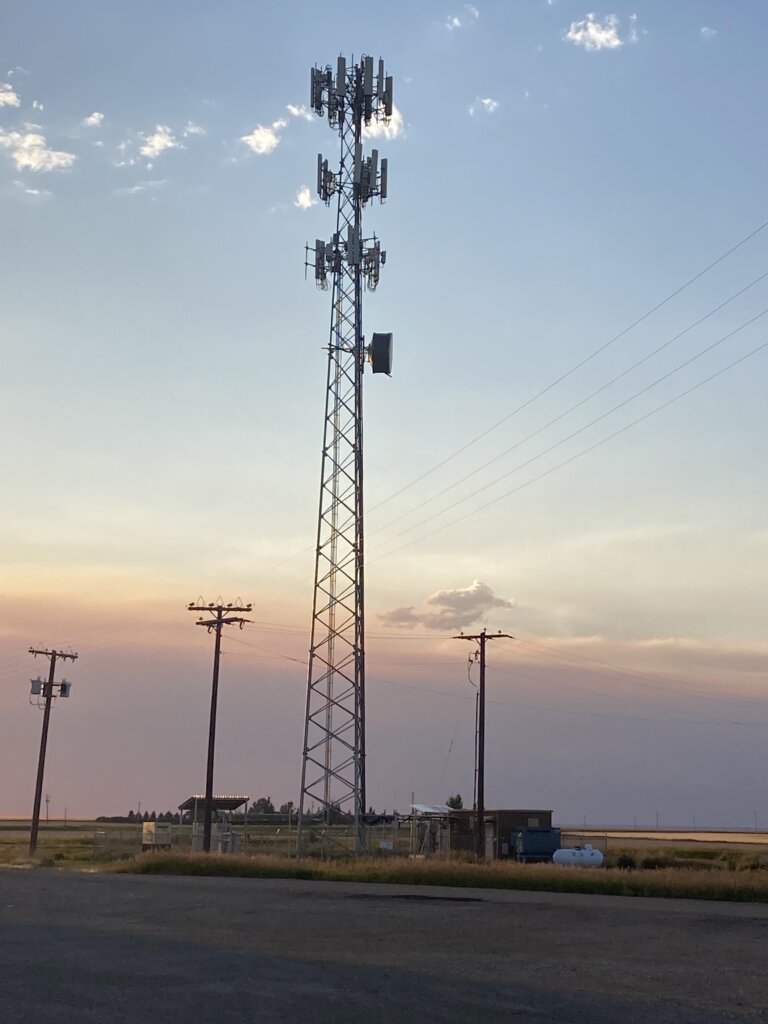
How do cell towers work?
How do they work? Cell towers work by communicating with cellphones within their cell or coverage ring. Antennas mounted to the tower receive signals from phone devices that relay them in a fraction of a millisecond to the carrier’s core network infrastructure, where that data is processed and sent to its destination. They also receive data from the AT&T, Verizon, T-Mobile, etc. networks and hand them off in a fraction of a millisecond wirelessly to mobile phone devices.
Cell towers communicate with mobile devices via radio frequency (RF) signals. When a call is made or text message is sent, or the internet is accessed on a wireless device, the device sends RF signals to the closest cellular tower. These RF signals contain electromagnetic waves with encoded information, which is the captured by the antennas on the tower and processed by the carriers core network with handoffs occurring at high speeds.

Who Owns and Operates Cell Towers and Who are the USA’s Top Cell Tower Companies?
While there are over 450,000 cell sites in the United States, including rooftop cellular sites, small cell telecom towers, DAS (distributed antenna system) networks in the USA, there are approximately 135,000 actual cell phone towers, of which 100,000, close to 80% of the cell towers are owned and operated by the “Big Four” cell tower management companies, American Tower, Crown Castle, SBA Communications and Vertical Bridge. The other 30,000 cellular towers are owned and operated by larger second tier cell tower management companies like US Cellular, Harmoni Towers, Peppertree, Everest Infrastructure, Phoenix Tower, Diamond and approximately 120 other smaller private tower management companies. There are approximately 2,000 cell towers constructed annually in the United States as of 2025.
1. American Tower Corporation: ATC owns and operates approximately 43,000 cell towers in the USA.
2. Crown Castle International Corp: CCI owns and operates approximately 40,000 towers and also owns over 80,000 miles of buried fiber cables.
3. SBA Communications Corporation: SBA owns and operates over 17,000 cellular towers in America.
4. Vertical Bridge: Vertical Bridge owns and operates over 17,000 towers.
5. US Cellular: USC owns 4,400 towers.
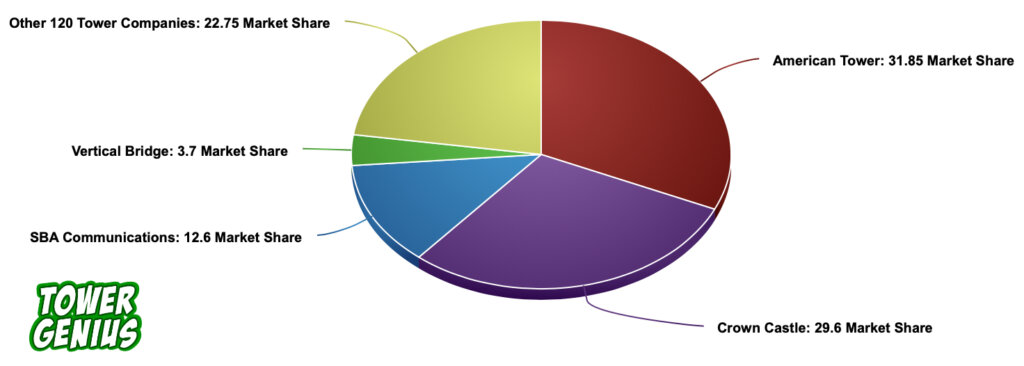

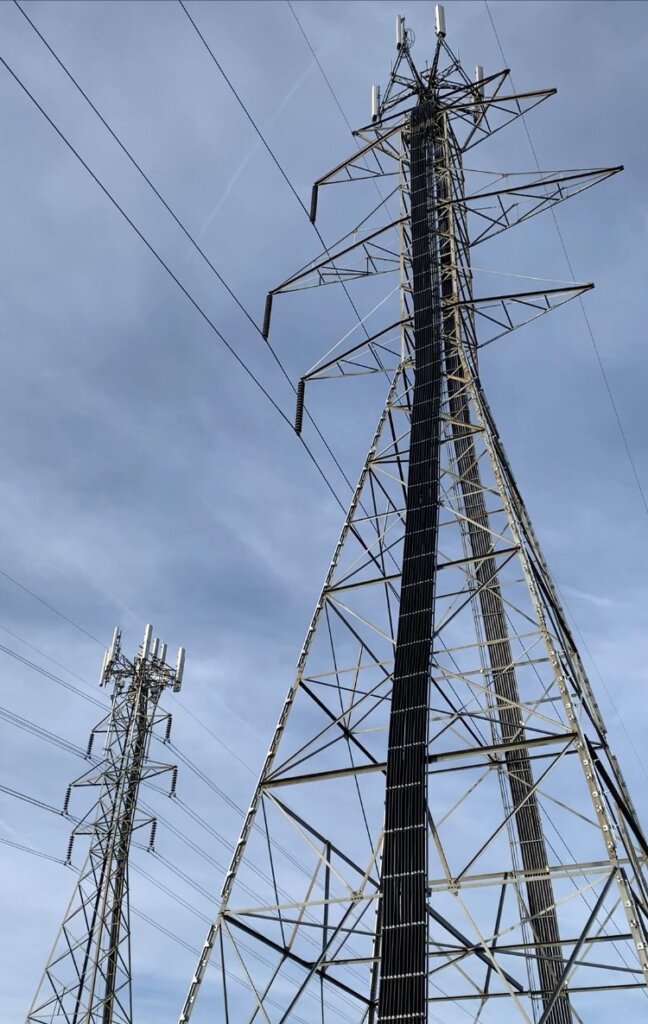
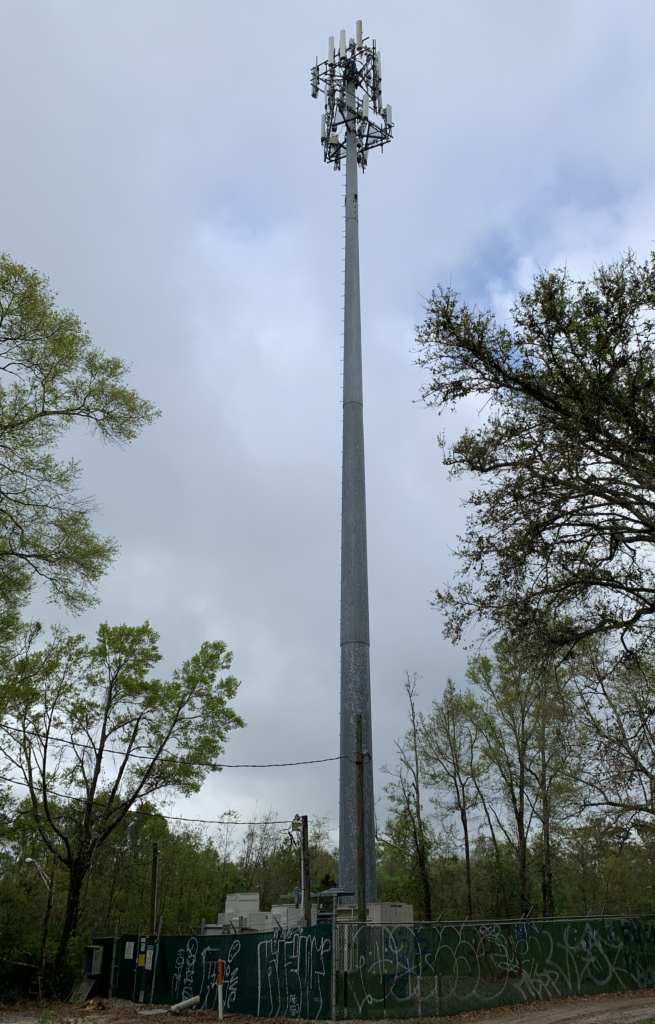
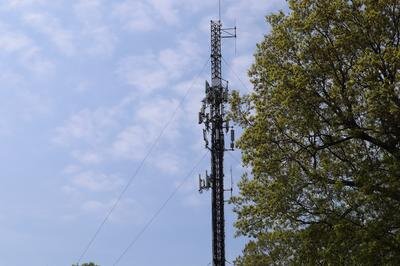
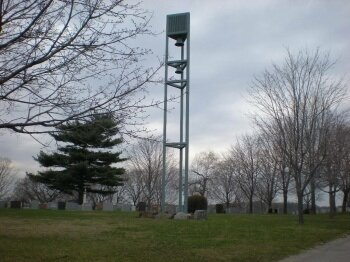

Cell Towers, Lease Agreements, Easements
Securing locations for cell tower development involves the acquisition of land through lease agreements between tower developers or cellular carriers or cell tower companies, and landowners. Leases and easements identify a specific portion of the land needed for access and utility easements, as well as space needed for the foundation, tower structure and telecommunications ground equipment identified as the “Leased Premises”.
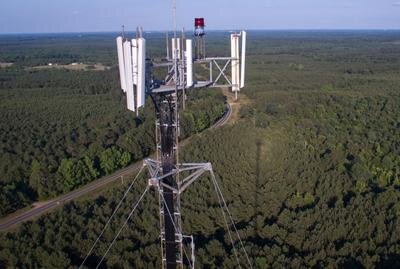
Acquiring land typically happens via a lease agreement using real estate site acquisition contractors working on behalf of the network operator, carrier or tower developer. Occasionally, site acquisition companies will try to secure the land with an easement between parties which can involve a one-time payment or installment payments for the easement rights without purchasing the actual property. Occasionally but rarely, land is purchased to develop a cell tower. This is a more common practice outside of the United States in developing countries where low-cost land can be purchased by the operator or developer.
Cellular network operators and cell tower companies are given an easement by the landowner to access the property and to bring the required utilities to the cell site in exchange for compensation. Cell tower lease agreements and or easements outline terms such as cell tower rental payments and other terms, access to the tower, indemnification and insurance, environmental matters, construction, use, lease termination and removal of tower. Memorandums of lease are memorialize the existence of a cellular tower at a given parcel that a cell phone tower is sited with the local town or county.
Cell tower infrastructure are the “highways” of mobile telecommunications, and without towers connecting to core networks, connectivity between wireless devices would not exist.
Fair and balanced cell tower lease agreements and easements can provide property owners with a recurring rental stream or one-time compensation, protect their interests and lower the risk of future liability.
Future Viability of Cell Towers

What does the future of cell towers look like? Will we need cell towers in the future? Will satellites or other technologies replace cell towers? These are questions that are asked of the wireless industry every year. To keep up with growing coverage and capacity needs of the wireless industry in the USA, the wireless industry was able to get legislation approved in 2018 that allows carriers such as Verizon Wireless, AT&T and T-Mobile save time and money deploying 5G cell towers in public Right of Ways where they can connect directly to fiber, only having to pay $270 per 5G small cell location in rent per year.
This FCC policy has allowed for tens of thousands of smaller towers to be deployed in urban areas each year, and could possibly render many urban cellular sites obsolete in the coming decade, much faster than any low orbit satellite communication networks currently being launched. The Partners of Tower Genius LLC believe that due to the mass deployment of 5G and eventually 6G cell towers and cell sites along public ROWs where there is access to fiber, a large number of cellular tower sites in larger cities have a risk of obsolesce in the next decade.
Towers in rural areas will continue to work in conjunction with satellite networks and 5G and eventually 6G sites being deployed and have long-term viability.
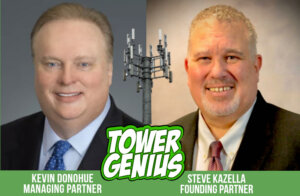
Do you need help with a cell tower lease offer or cell tower lease buyout?
If you have any sort of cell tower lease related questions, turn to Tower Genius with confidence. The Partners of Tower Genius, Kevin Donohue and Steve Kazella have assisted thousands of cell tower landlords with their lease questions over the past 17 years as landlord advocates. Call us anytime at 888-313-9750.
The Steps To Avoid When Negotiating a Cell Tower Lease – FREE Guide:
Download our FREE Guide here and contact us if you require cell site lease assistance anytime with any questions relating to your cell site lease valuation, negotiation or easement sale.
Get your FREE Guide and then give us a call at 1 (888) 313-9750. We would love to discuss what your cell tower lease rental stream is worth and what you should expect to receive for it if you decide to hold onto it and renegotiate the lease or if you offer it to a Cell Tower Lease Buyout Company.
Contact Tower Genius for Assistance with your Cell Tower Lease.
Contact Us
We would love to hear from you! Please fill out this form and one of us from Tower Genius will get in touch with you shortly.

